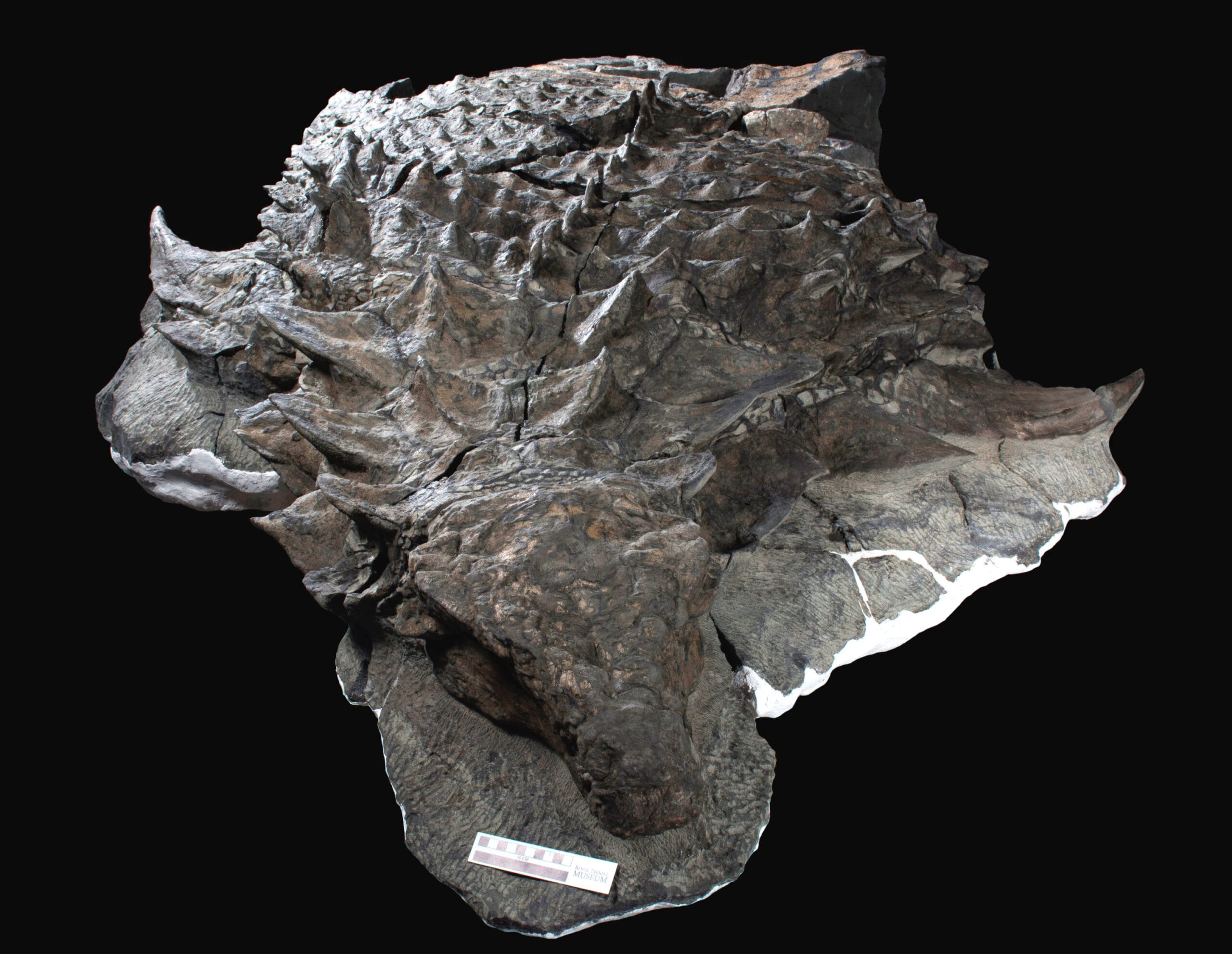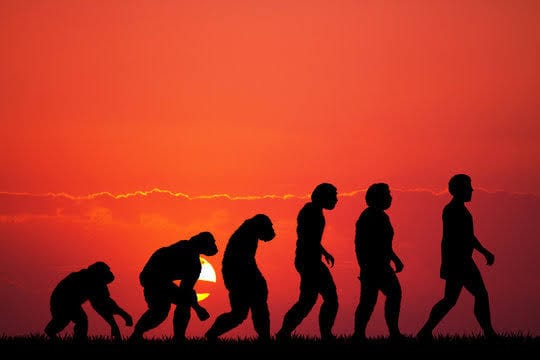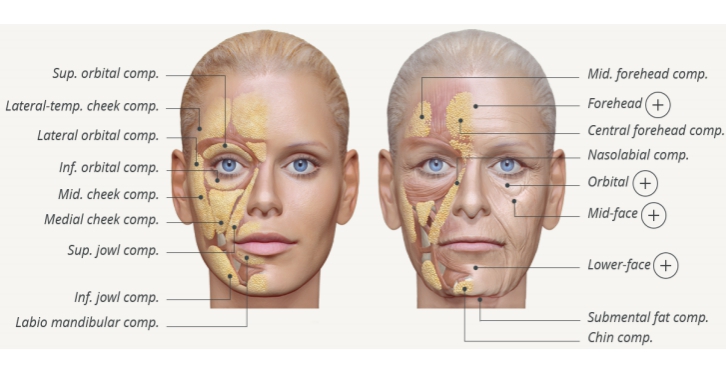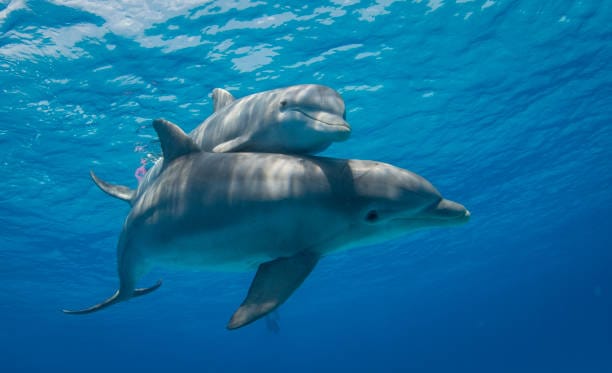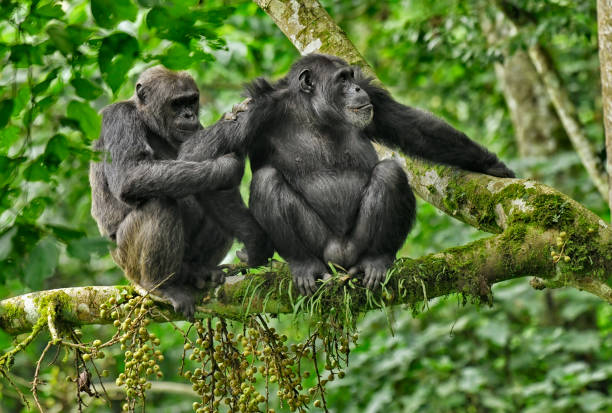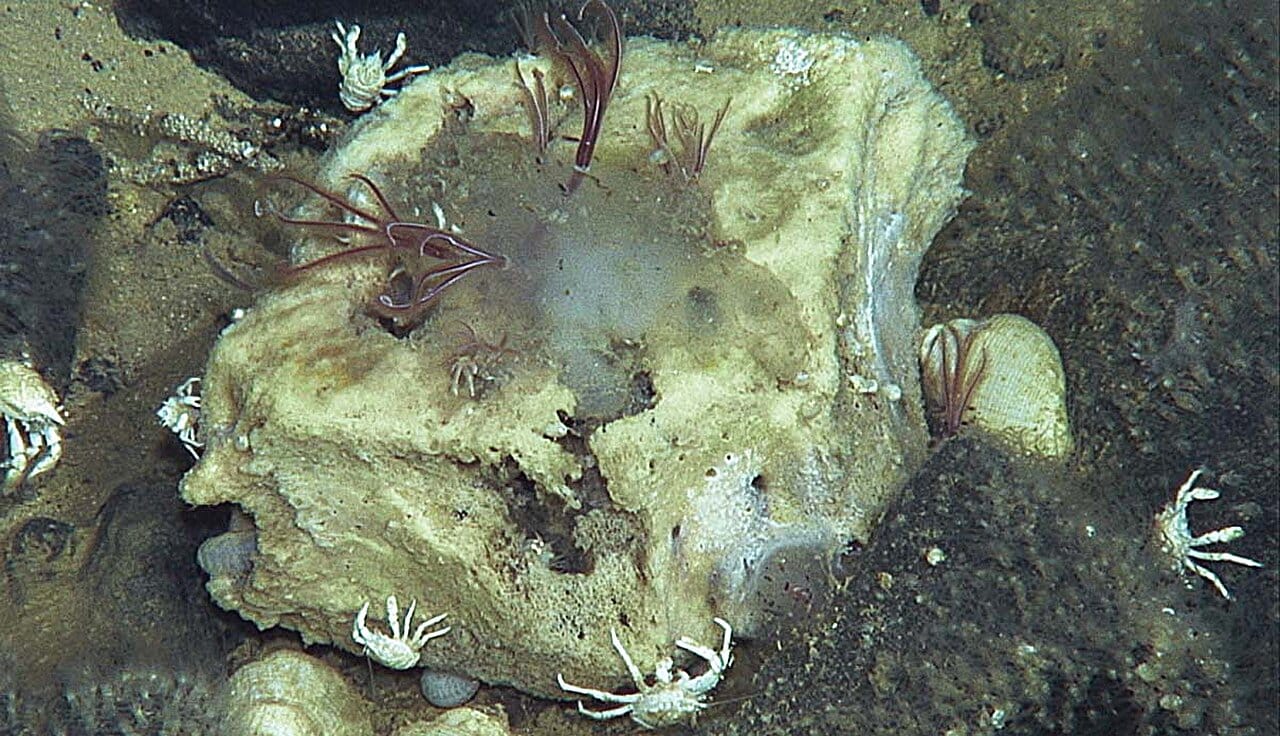When we think of fossils, most of us imagine bones turned to stone—ribs of ancient dinosaurs curled in dusty rock, teeth grinning out from cliffsides, the occasional footprint hardened like a ghost’s whisper in a prehistoric trail. We see the hard stuff. The durable. The parts that time can’t so easily erase. Bones, shells, and teeth dominate the fossil record because they’re made of mineral-rich materials that resist decay. But what of the delicate—skin, muscles, feathers, and internal organs? These, too, were once part of the living tapestry of ancient creatures. Do they ever survive? Do we ever glimpse, in petrified form, the vulnerable flesh of an ancient world?
The answer, astonishingly, is yes.
It defies logic at first. Soft tissues should decompose within days or weeks after death, especially in the open wild, subject to bacteria, scavengers, and weather. Yet science has uncovered rare and miraculous cases where not only impressions of skin or feathers have been preserved, but also real fragments of tissue—sometimes flexible, sometimes still structured on a molecular level. These fossils open up entire dimensions of the past that we once thought forever lost. They do more than fill in anatomical blanks. They bridge the gap between the dead and the living, showing us creatures not as skeletons, but as beings with color, texture, even traces of their last meals.
To understand how such preservation is even possible, we must first journey into the fine line between life and decay—and how under just the right conditions, death can leave behind a story far more vivid than bone alone can tell.
What Fossils Usually Preserve—and What They Don’t
Fossilization is not a single process but a collection of different pathways through which once-living organisms become part of the geological record. Most commonly, hard parts like bones and shells are preserved through permineralization, a process in which groundwater rich in minerals seeps into the pores of organic materials, gradually turning them to stone. In other cases, a shell might leave behind a mold or cast, a shadow of its former self in hardened sediment.
But the soft parts—skin, muscles, internal organs, nerves—are made of proteins, fats, and cells that rapidly break down after death. Once the protective function of the body ends, microbes swarm, moisture accelerates decay, and even the weather plays a role in stripping away anything vulnerable. In a typical scenario, soft tissue disappears within a few days, perhaps weeks. That’s why the fossil record is biased toward the sturdy.
And yet, despite all odds, soft tissues do sometimes survive—if the burial is swift, the chemistry right, and the environment almost paradoxically hostile to decay.
The Rare Alchemy of Soft Tissue Fossilization
Soft tissue fossils form only under extraordinary circumstances. These are often referred to as exceptional preservation or Lagerstätten, a German word meaning “storage place” that paleontologists use to describe fossil sites with extraordinary preservation.
Sometimes the conditions are so anoxic (oxygen-deprived) that bacteria can’t carry out their usual work of decomposition. In other cases, minerals rapidly coat the soft tissues, creating a microscopic “cast” before the original material decays. Clay minerals, phosphate, and even iron compounds can preserve the fine structures of cells, capillaries, and collagen fibers.
One of the key forms of this preservation is carbonization, where pressure and heat drive off all elements except carbon, leaving a blackened film that outlines soft parts like skin or feathers in astonishing detail. Another is phosphatization, where phosphate minerals replace or coat soft tissues at the microscopic level, preserving internal organs, embryos, or muscle fibers.
Nature occasionally writes in ink invisible to the eye—only to reveal it millions of years later, under the lens of a microscope or the glow of a synchrotron beam. And when it does, it redraws our entire image of what prehistoric life looked like, sounded like, even moved like.
Dinosaur Mummies: More Than Bone
Some of the most breathtaking examples of soft tissue preservation come not from tiny worms or trilobites, but from the titans of prehistory: dinosaurs.
In several extraordinary finds, paleontologists have discovered what are referred to as “dinosaur mummies”—fossils where not only the bones are preserved, but also the skin, scales, muscle outlines, and more. These mummified fossils aren’t mummies in the traditional Egyptian sense. They’re the result of natural preservation under unique circumstances.
One of the most famous examples is the “Dakota” fossil, a 67-million-year-old hadrosaur (a duck-billed dinosaur) discovered in North Dakota. This specimen includes large swathes of fossilized skin, with impressions of scales and a texture that reveals much about the dinosaur’s appearance. Its preservation was so complete that scientists could even measure the space between bones and estimate how much muscle it had in life, providing new insights into how fast it might have run.
Another marvel came from China’s Liaoning Province, where thousands of feathered dinosaurs and early birds have been discovered in volcanic ash beds. The microscopic impressions of feathers, sometimes with pigment structures called melanosomes, allow scientists to estimate the actual color of some dinosaurs. In one case, Anchiornis, a small, feathered dinosaur, was reconstructed with black and white plumage and a reddish crest—not from guesswork, but from direct fossil evidence.
These aren’t just skeletons. They’re time capsules, revealing surface textures, patterns, and even physiological details that bones alone can’t provide.
The Soft Tissue Revolution: Blood Vessels and Proteins
Until recently, the idea that actual soft tissues—like blood vessels or proteins—could survive for millions of years was considered almost impossible. But a quiet revolution began in 2005, when paleontologist Dr. Mary Schweitzer made a shocking discovery.
While studying a 68-million-year-old Tyrannosaurus rex femur, she broke open the fossil and, after demineralizing it, found flexible, elastic structures resembling blood vessels. Further analysis revealed the presence of what looked like red blood cell-like shapes and fragments of collagen, a protein found in connective tissue.
The scientific community was skeptical. How could such fragile molecules survive deep time? Many believed the materials must be contamination. But Schweitzer persisted, and subsequent studies confirmed the authenticity of the find. Since then, similar soft tissue fragments have been discovered in other dinosaur fossils, including hadrosaurs and theropods.
Using techniques like mass spectrometry, scientists have even been able to sequence partial protein fragments, which opens up incredible possibilities for understanding dinosaur biology on a molecular level—something previously unimaginable.
These finds don’t mean we’re anywhere near “Jurassic Park”-style resurrection; DNA, which degrades quickly, has never been recovered from non-avian dinosaurs. But the preservation of ancient proteins and structures is allowing paleontology to edge ever closer to the biology of the past.
Insects in Amber: A Window Into the Microscopic Past
While dinosaur tissues capture the imagination, another form of soft tissue preservation has long enthralled scientists and the public alike: amber fossils.
Amber is fossilized tree resin, and when it oozes over a small animal, like an insect, and then hardens rapidly, it can trap the creature in exquisite three-dimensional detail. Amber has preserved mosquitoes, spiders, lizards, and feathers—sometimes with even subcellular features visible under magnification.
In some pieces, the coloration of wings is preserved. In others, resin seeps into the animal’s respiratory and digestive systems, preserving microscopic internal structures. While the romantic idea of extracting dinosaur DNA from an amber-trapped mosquito remains science fiction, these specimens are invaluable for understanding ecosystems, behaviors, and morphology from as far back as 100 million years ago.
Amber preservation doesn’t rely on mineralization but on rapid encapsulation and long-term dehydration. The result is a fossil not pressed flat in stone, but frozen in time, in almost photographic clarity.
Fossilized Skin, Scales, and Feathers: Clues to Evolution
The preservation of feathers and skin in fossils has transformed our understanding of how birds evolved from dinosaurs. Before the 1990s, the dominant image of dinosaurs was scaly and reptilian. The idea that many of them had feathers was speculative and controversial.
Then came a series of jaw-dropping discoveries from China—fossils like Sinosauropteryx, Microraptor, and Yutyrannus—which clearly showed filamentous and plumage-like structures. These were not guesses. They were printed into the rock itself.
Even some larger dinosaurs, like Yutyrannus, a cousin of T. rex, were found with feather impressions, suggesting that insulation, not flight, was the original evolutionary driver of feathers.
Skin impressions, too, tell a vivid story. Ceratopsians (horned dinosaurs like Triceratops) have been found with skin textures resembling modern reptiles. In some sauropods, the pebbly pattern of scales stretches across what were once flanks the size of buses. These fossils allow artists and scientists alike to reconstruct what dinosaurs really looked like—not as lumbering monsters, but as vibrant animals with individual textures, patterns, and possibly even colors.
What Soft Tissue Tells Us About Ancient Life
Soft tissue preservation doesn’t just add flair to our fossil record. It provides data.
From preserved feathers, we learn about thermoregulation, display behavior, and flight evolution. From fossilized eyes, we learn about vision and color perception. From stomach contents, we can tell who ate what, and when. Fossilized hearts, livers, muscles, and even embryos have been found in some marine reptiles and early vertebrates, painting detailed pictures of physiology.
In the Burgess Shale of Canada and the Chengjiang Formation of China, soft-bodied creatures from over 500 million years ago—during the Cambrian Explosion—reveal nervous systems, gills, and digestive tracts. These fossils are key to understanding early animal evolution.
Even more recently, fossils from Ice Age permafrost have yielded woolly mammoths, woolly rhinos, and other megafauna with flesh, fur, and internal organs intact. Some have even oozed blood when thawed.
Each find is a whisper from time, speaking of breath and heartbeat, not just bone.
What the Future Holds: Technology Meets Paleontology
The next frontier in the study of soft tissue fossils lies in technology. Instruments like synchrotrons, scanning electron microscopes, and X-ray fluorescence imaging allow scientists to peer deep into fossils without destroying them. These tools can detect traces of biomolecules, identify preserved pigments, and map the structure of tissues in three dimensions.
Even chemical imaging can differentiate original organic material from mineral infill. This opens up new ways to ask old questions: What was the metabolism of this animal? Did it live in water or land? Was it warm-blooded or cold?
There’s also a push toward biomolecular paleontology, which may one day provide direct evidence of how extinct animals fought disease, processed food, or adapted to climate change.
The Fragile Impossibility of Ancient Flesh
Soft tissue fossils are miracles of improbability. They’re not supposed to exist, and yet they do. Each one is a triumph over entropy, a snapshot of vulnerability made permanent through an alchemy of chemistry and chance.
They remind us that history is not only written in stone but also in whispers—whispers of skin, of blood, of feather and fur. They bridge the imagination and the microscope, allowing us not just to know the past, but to feel it.
When you see a piece of mummified dinosaur skin, or a 100-million-year-old feather, or a three-dimensional insect trapped in amber, you’re not just looking at a fossil. You’re gazing into a moment that was never meant to survive—yet somehow, miraculously, it did.
And that moment, quiet and fragile and impossibly old, still speaks. Not in words, but in textures. In patterns. In echoes of touch and color and warmth.
In those remnants, we see ourselves—not just as beings made of cells and organs and breath, but as creatures connected to a world so ancient, so vibrant, it pulses beneath the stone.
